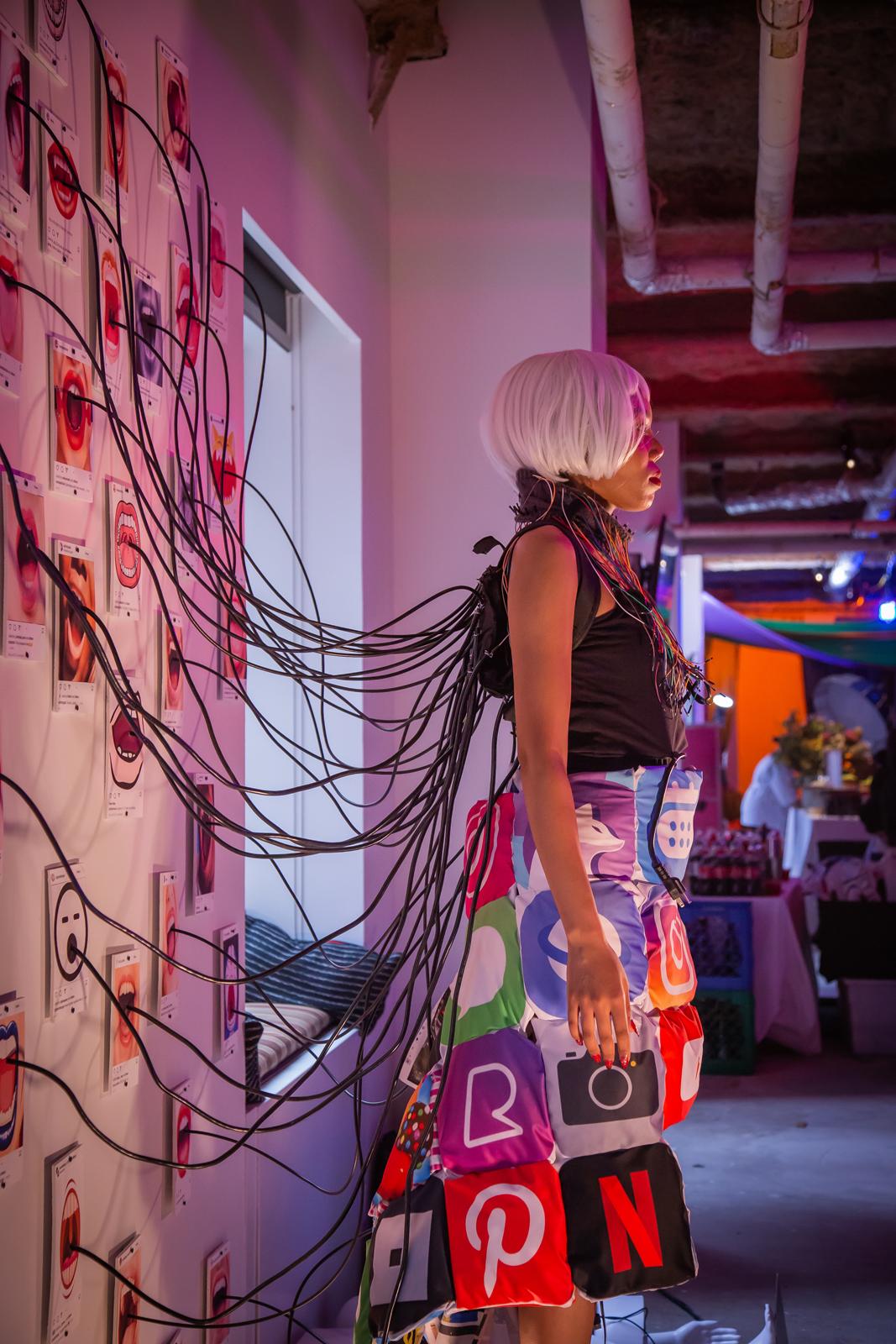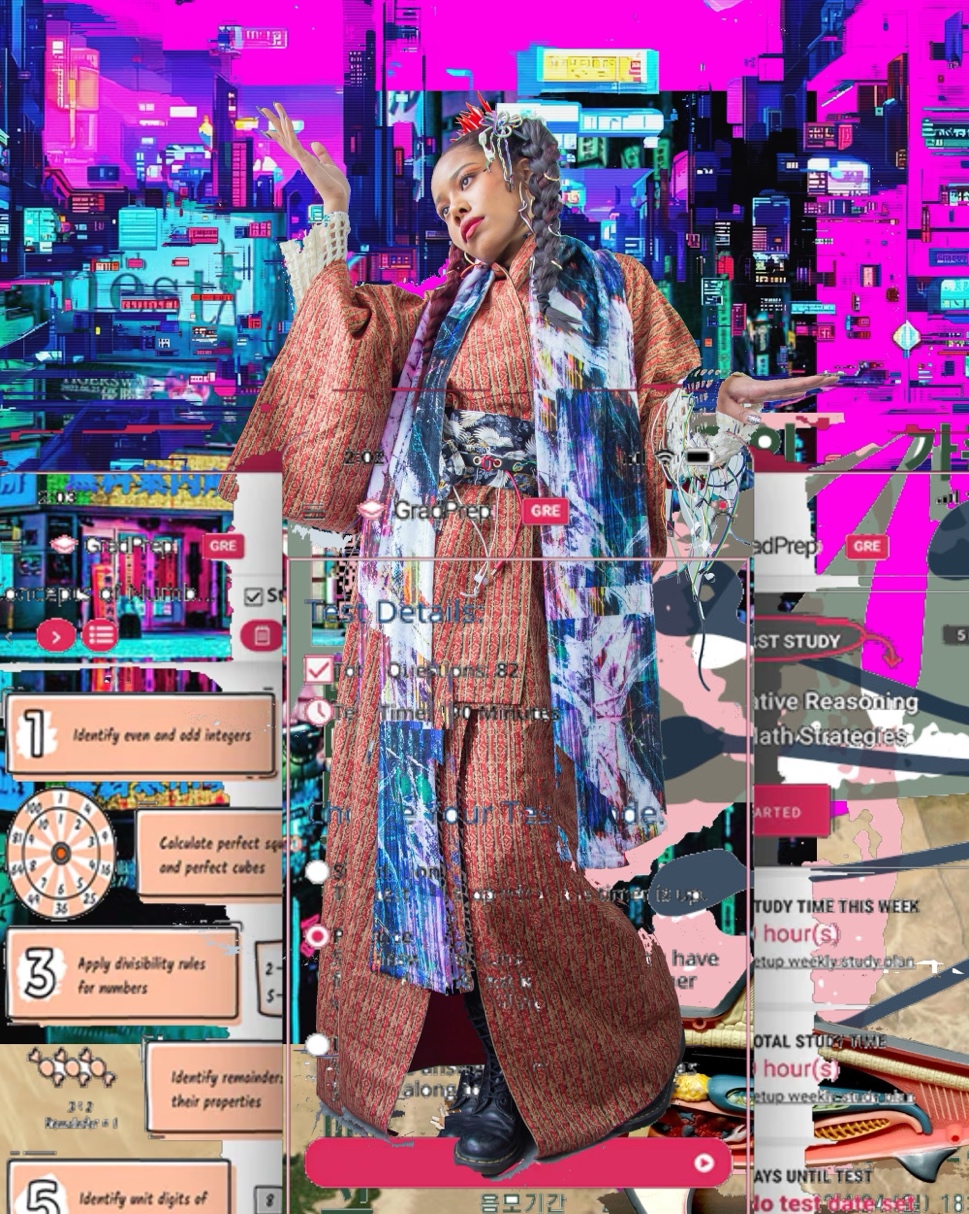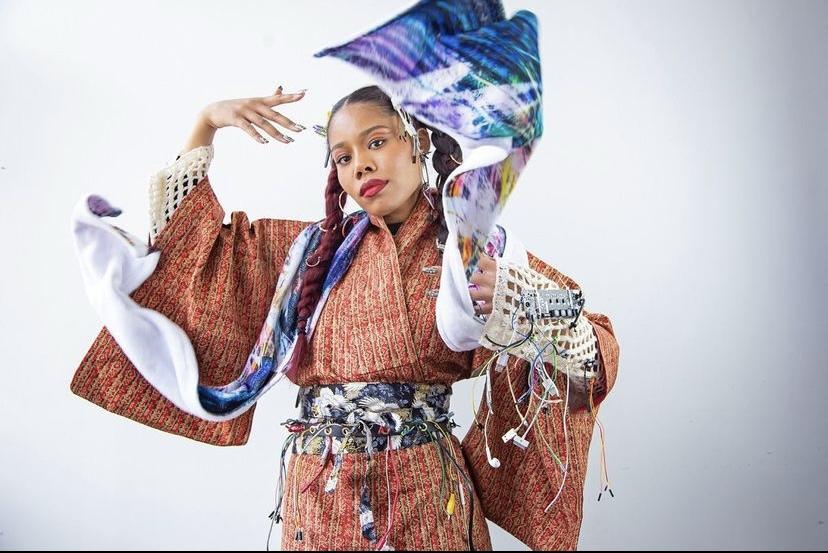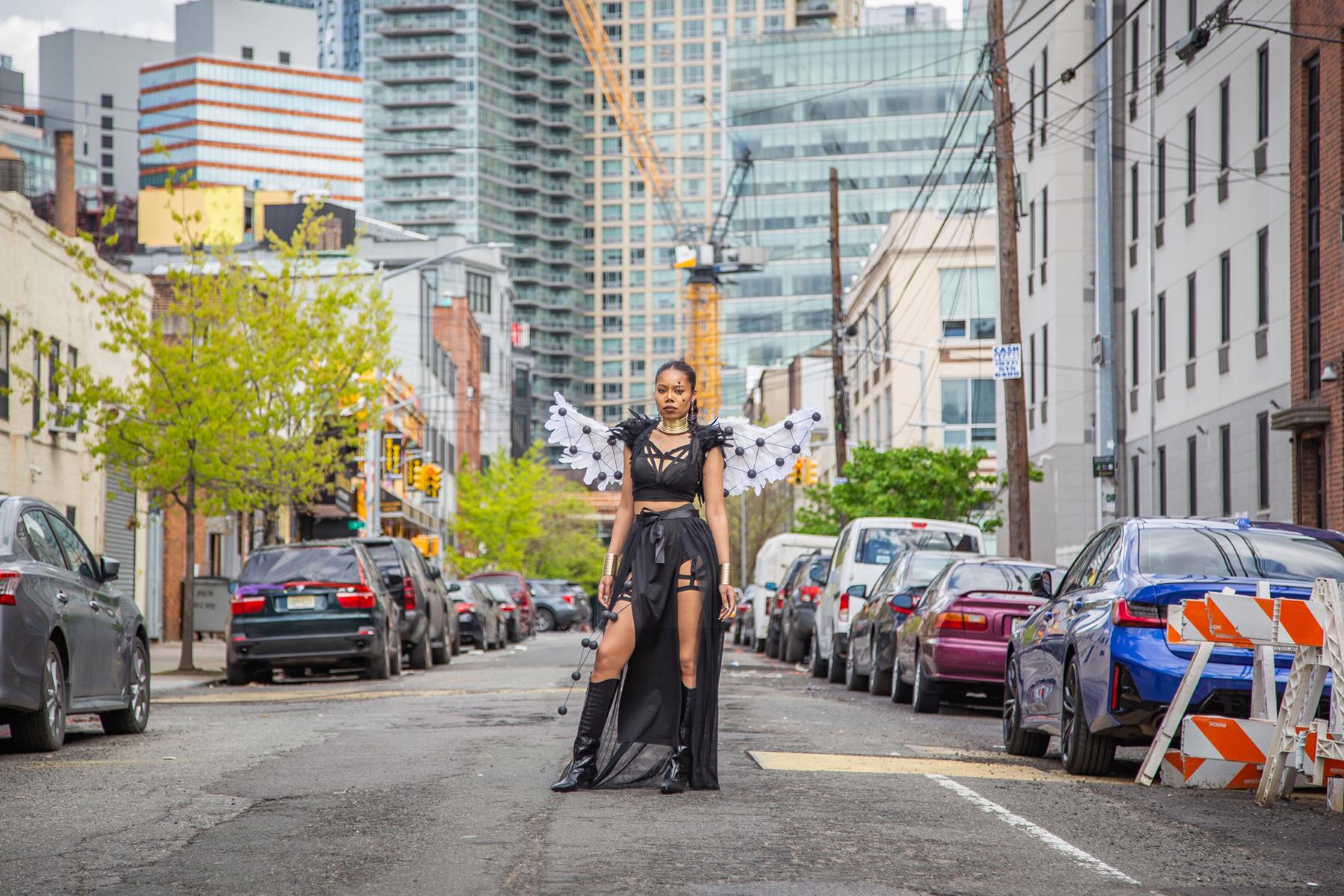Shademomo Iwasaki is a trailblazing contemporary artist whose work brings a powerful voice to today’s art scene. Born and raised in Japan to a Ghanaian father and Japanese mother, she draws deeply from her biracial heritage to create art that is both personal and boldly experimental. Her practice transcends conventional boundaries, combining futuristic digital media, analog techniques, fashion, and immersive environments to explore complex themes such as human consciousness, societal pressure, and technological evolution. Moreover, blending these mediums with her heritage is what makes her standout from the crowd. Momo’s practice is as much about questioning societal structures as it is about creating visually engaging experiences. Her work encourages the viewer to not only witness art but actively engage with the changing perceptions of culture, space, communities, individuality, independence, equality, and uniqueness of identities.
Momo’s first solo exhibition “I am Glitch” demonstrates her abilities to challenge traditional understandings of art through innovative use of digital and interactive analog materials blending with her culturally unique heritage. “Digitalized Typhoon,” expressing human societal struggles and concerns with technology featuring handmade fashion pieces with audience participatory interactive performance using AR, pushes the boundaries of social commentary. In this work, he explores how societal control mechanisms impact individual agency and self-awareness. Through advanced motion sensors and digital interfaces, the audience becomes part of the artwork itself, transferring their emotional states to others in real-time. This dynamic exchange of energy within the installation encourages viewers to reflect on their role in the greater societal narrative, shifting from passive observation to active participation.

“Geisha Shuffle” is another key work in Momo’s repertoire embodying her ongoing exploration of human expressions while merging cultural essences through Japanese ethnic costume called Kimono. “Geisha” were female Japanese performing artists and entertainers trained in traditional Japanese performing arts styles, such as dance, music and singing, as well as being proficient conversationalists and hosts. The first female geisha appeared in 1751 and Kimono was their formal clothing. The work’s primary goal is to offer a realization of how us humans have been evolving, the contrast between now and the 17th century yet the contrast can merge into one another and create unusual harmony. The installation offers a response to the pervasive anxiety in modern society, especially among youth, who often seek solace in external forces rather than internal wisdom. In this sense, Momo’s work speaks to the spiritual void many people face today, encouraging them to rediscover inner peace through both traditional wisdom and technological means.

Unlike many contemporary artists who view technology as just another medium, Momo embraces it as an integral force that shapes the way we experience and interact with the world around us. Her installations, such as “Concrete Jungle,” offer a glimpse into how digital technology can foster a deeper, more harmonious relationship between humanity and nature. Using a random street in New York City where it’s full of technology yet that concrete jungle is now “natural” or “everyday scene” for us humans where it’s hard to find nature in our society now and we are so used to overlooking it. A futuristic costume as a key element in her interactive installation, Momo creates a space where the boundaries between organic life and technology blur, offering a nuance of an experience for the viewer. This work represents Momo’s growing belief that art should transcend the limits of traditional space and time, using technology not just as a tool but as a medium to foster human connection and reflection.
Momo’s work points to a future where art is not confined to traditional galleries or physical spaces. By utilizing interactive design, sensory technologies, fashion, and cultural essences, she foresees a new era of art where the boundaries between the viewer, the artist, and the artwork are blurred. Art will no longer be a static experience but a dynamic and evolving one. Momo’s belief in the importance of interdisciplinary dialogue, a process that involves people from different disciplines, cultural backgrounds, and institutions to work together on a topic. The goal is to include a variety of perspectives and ideas in the decision-making process. The merging of art, philosophy, heritage, communities, and technology suggests a future where art serves not just as an aesthetic experience but as a vehicle for social change, intellectual exploration, and personal transformation. Momo embraces technology and natural materials known as analog, in her work, creating experiences that challenge the conventional boundaries of art. Momo’s focus on the relationship between materials and culture, as someone who came from a mixed background encourages viewers to be unique, different and extraordinary. Her work speaks to the relationship between multiculturalism and art, cultural understanding, cultural identities and appreciation among people from various backgrounds in not only art and fashion but in any world by creating works that transcend traditional forms. Raising awareness of cultural diversity in societies might be able to challenge people’s stereotypes and more understanding of each other resulting in empowering bringing communities closer. Letting people view technology not merely as a tool, but as a transformative medium that facilitates deeper human connections and challenges the way we perceive the world. Momo’s vision is one that embraces both the digital and the analog blending with cultural materials, creating a space where art becomes an experience that can reshape perceptions, promote acceptance of uniqueness, and foster deep human connections.




